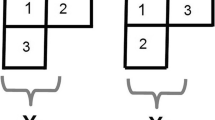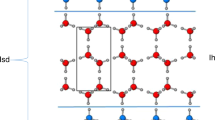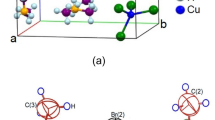Abstract
THE X-ray photograph of this cubic crystal powder shows an unexpected small number of interference lines (Fig. 1). The unit cell of dimensions (4·06 A.)3 contains but half a molecule. A similar fact, n = 13/, was found in the case of CdBr21; here the small pseudoperiod as indicated by the X-rays was explained by a mode of compilation of the atomic layers, in which the CdI2 and the CdCl2 type follow in haphazard succession.
This is a preview of subscription content, access via your institution
Access options
Subscribe to this journal
Receive 51 print issues and online access
$199.00 per year
only $3.90 per issue
Buy this article
- Purchase on Springer Link
- Instant access to full article PDF
Prices may be subject to local taxes which are calculated during checkout
Similar content being viewed by others
References
J. M. Bijvoet and W. Nieuwenkamp, Z. Krist., 86, 466 ; 1933.
J. A. A. Ketelaar, Z. Krist., 87, 436 ; 1934.
L. W. Strock, Z. phys. Chem., B, 25, 441 ; 1934.
Author information
Authors and Affiliations
Rights and permissions
About this article
Cite this article
BIJVOET, J., MACGLLLAVRY, C. The Crystal Structure of Hg(NH3)2CI2. Nature 134, 849–850 (1934). https://doi.org/10.1038/134849a0
Issue Date:
DOI: https://doi.org/10.1038/134849a0
Comments
By submitting a comment you agree to abide by our Terms and Community Guidelines. If you find something abusive or that does not comply with our terms or guidelines please flag it as inappropriate.



